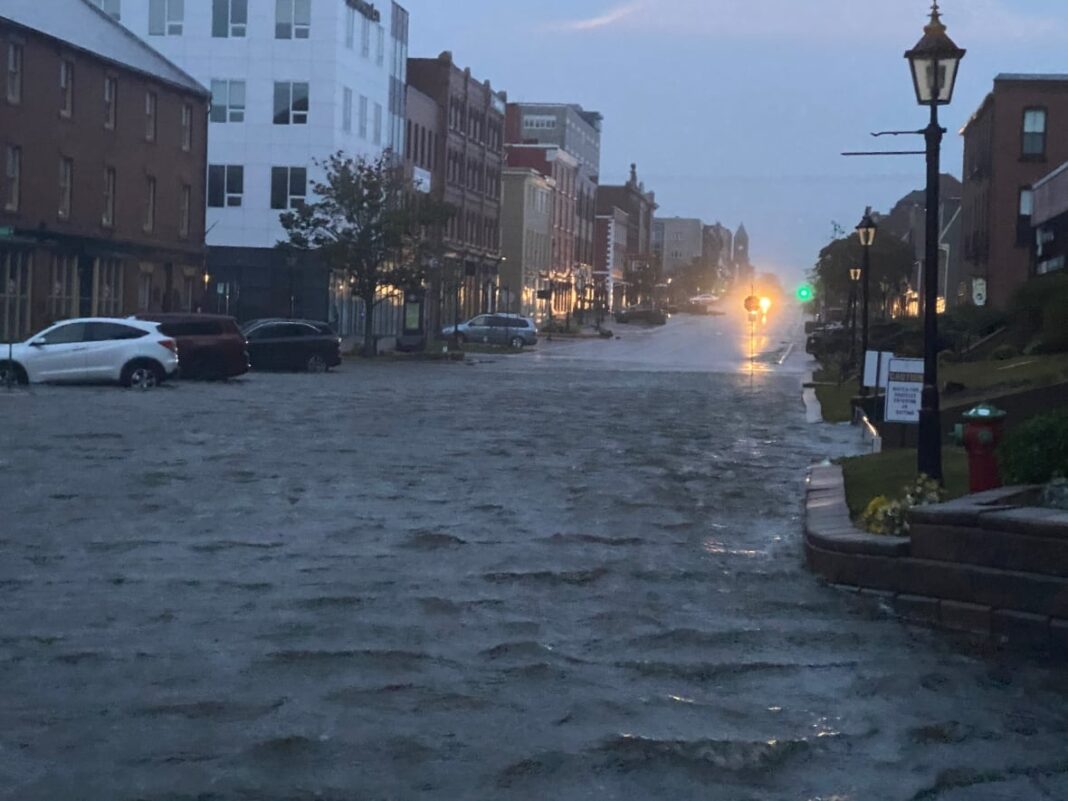Hurricane-strength Fiona is ripping through Canada’s eastern seaboard after making landfall in Nova Scotia early Saturday, slamming the area with fierce rain and damaging winds, and knocking out power for hundreds of thousands in what could be a “landmark” weather event for the country.
Fiona, now a post-tropical cyclone, had maximum sustained winds of 85 mph — the power of a Category 1 hurricane — at 8 a.m. ET Saturday, with its centre over the Gulf of St. Lawrence after crossing Nova Scotia, the U.S. National Hurricane Center said.
The storm has wiped out power to most of Nova Scotia and Prince Edward Island Saturday morning, with winds and rains extending far from the storm’s centre, CNN reports.
More than 540,000 outages were reported in Atlantic Canada, including nearly all of Prince Edward Island’s 86,000 customers, according to utility tracker Poweroutage.com.
Officials in Nova Scotia’s Cape Breton area asked people to shelter in place.
“Across the province, we’re hearing reports of damaged trees and power lines as the storm continues to pass through,” the Nova Scotia Emergency Management Office tweeted.
Residents in New Brunswick, southern Quebec, and Newfoundland and Labrador additionally face severe weather as Fiona tracks north following its landfall between Canso and Guysborough in eastern Nova Scotia.
Officials along Canada’s Atlantic seaboard have urged those in Fiona’s path to be on high alert and prepare for the impact of the storm, which has already claimed the lives of at least five people and shut off power for millions as it battered multiple Caribbean or Atlantic islands this week.
“We were still making calls to residents (through late Friday) just to try to give some heads up that … you need to be ready to move at a moment’s notice if you don’t already move right then,” Brian Button, mayor of Newfoundland’s Channel-Port aux Basques, told CNN Saturday.
Fiona is on track to be an “extreme weather event” in eastern Canada, threatening with about two months’ worth of rainfall, forecasters in Canada said Friday.
“This could be a landmark event for Canada in terms of intensity of a tropical cyclone,” and it could even become Canada’s version of Superstorm Sandy, said Chris Fogarty, Canadian Hurricane Centre manager. Sandy in 2012 affected 24 states and all of the eastern seaboard, causing an estimated $78.7 billion in damage. An unofficial barometric pressure of 931.6 mb was recorded at Hart Island, which would make Fiona the lowest pressure land-falling storm on record in Canada, according to the Canadian Hurricane Centre. Wind observations on Beaver Island in eastern Nova Scotia were recorded at 161 km/h.
After passing through the Gulf of St. Lawrence, Fiona should reach Quebec’s lower north shore and Newfoundland and Labrador by late Saturday, the Canadian Hurricane Centre said. Hurricane-force gusts have been reported across parts of Maritime Canada, ranging from 110 to 150 km/h.
Fiona had been a Category 4 storm early Wednesday over the Atlantic after passing the Turks and Caicos and remained so until Friday afternoon, when it weakened on approach to Canada. It became post-tropical before making landfall, arriving at the same time as a trough of low pressure and cold air to the north — much like Sandy did, according to Bob Robichaud of the Canadian Hurricane Centre.


